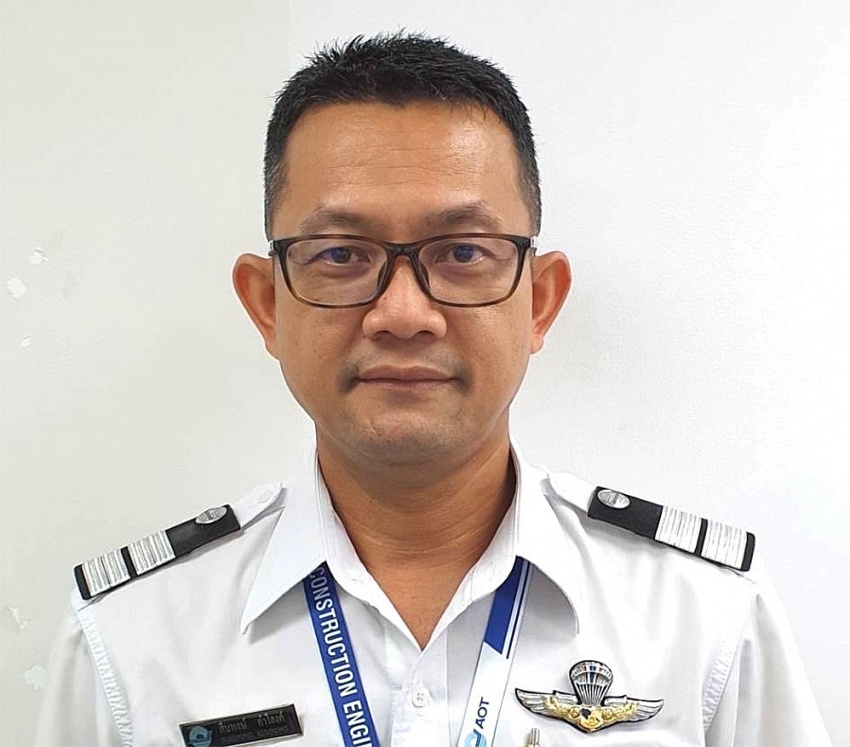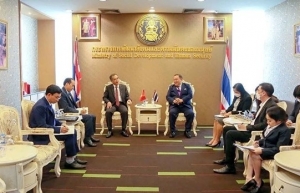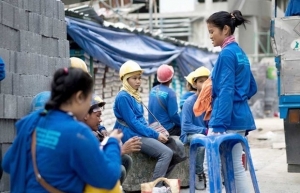Thai airport upgrades demonstrate Vietnam’s future
You have an advanced OneID system integrated into the airport. Can you expound on its unique features and how it contributes to a seamless passenger experience?
 |
| Seubpong Kumhong, deputy chairman at Thailand Public Co., Ltd. (AOT) |
The system exemplifies our commitment to innovating passenger processes. Leveraging biometric technology, this system allows passengers to check in, move through security, and board their flights using a single digital identity, reducing processing times significantly.
The system is integrated with an automated boarding bridge and check-in system, even equipped to handle the impressive A380, the world’s largest commercial aircraft.
Thailand seems to be at the forefront of solar energy utilisation. Are there any ongoing or future initiatives for Suvarnabhumi Airport to harness solar power to meet its energy needs?
The implementation of solar energy in an airport setting presents certain complexities. However, we’re certainly exploring this avenue, and in fact, the airport already leverages solar energy for some minor electrical requirements. Given Thailand’s tropical climate, we are keen to further expand the use of renewable energy in our infrastructure.
Can you share more details about the airport’s automated people movers (APMs) and its role in enhancing passenger convenience?
Six upcoming APMs at Suvarnabhumi will accommodate 6,000 passengers per hour for transportation between the existing main passenger terminal and satellite terminal 1 (SAT-1) through approximately one kilometre of underground tunnel, with a fully automated and driverless transit system that ensures efficient and convenient transport by reducing transit times of passengers within the airport.
Building such an ultra-modern airport must have been fraught with challenges. Could you share a few?
Constructing the SAT-1, and integrating it with the existing infrastructure of the main passenger terminal, was a significantly complicated task. Therefore, we needed to have the most reliable and capable company who had more experience in the systems of both long-time technologies of traditional airport operations and the updated advanced technologies of SAT-1 to ensure for the seamless synchronisation of the integrating and interfacing of the two.
The MEPF (mechanical, electrical, plumbing, and fire protection) system is a crucial part of any building, especially airports. Who handled its implementation at Suvarnabhumi?
The implementation was a crucial undertaking. Power Line Engineering (PLE) was entrusted with the responsibility of managing the MEPF and other vital systems of SAT-1. PLE is highly regarded and recognised not only as a general contractor but also for their expertise in MEPF and other related systems.
They have a dedicated team of experienced engineers and staff who worked tirelessly, and their involvement played a pivotal role in the successful provision, installation, testing, and commissioning of this and other vital systems.
Why was PLE chosen over international contractors for the MEPF?
PLE was chosen due to their involvement in the PCS Joint Venture. The joint venture consisted of two contractors, PLE and China State Construction, with a total project value of approximately $406 million for SAT-1. PLE was specifically responsible for managing the highly complex tasks involved in providing, installing, testing, and commissioning all MEPF and other vital systems, including ICT, security, and special airport systems.
Given PLE’s extensive portfolio and the scale and complexity of the project, we had confidence and trust in their capabilities, expertise, and experience to handle these responsibilities. The direct part of the project under PLE’s responsibility was valued at around $228 million.
Could you elaborate on AOT’s experience with its previous airport projects?
Our portfolio spans a range of successful airport construction projects, each bringing its unique accomplishments and challenges. For instance, Don Mueang International Airport, one of the oldest operational airports globally, was significantly modernised by AOT, transforming it into a hub for low-cost carriers. Chiang Mai International Airport, on the other hand, was expanded under our supervision, establishing it as the fourth-busiest airport in Thailand.
Each project has had its fair share of challenges - from terrain-related issues to weather constraints and even balancing operational demands with construction timelines. However, overcoming these hurdles and delivering functional, efficient airports has undoubtedly been AOT’s achievement.
We’re committed to continuously improving our existing airports to provide world-class passenger experiences. This includes further modernising our existing infrastructure and investing in sustainable and innovative technologies.
 | Thailand parliament votes for new prime minister The Thai parliament convened a joint session on July 13 to vote for a new prime minister who will lead the country’s government in the coming four years. |
 | Vietnam, Thailand jointly fight human trafficking Vietnamese Ambassador to Thailand Phan Chi Thanh held a working session with Thai Minister of Social Development and Human Security Chuti Krairiksh in Bangkok on July 12 to promote bilateral cooperation in combating human trafficking and share experience in social welfare development. |
 | Thailand eases procedures for migrant workers Thai authorities have relaxed procedures to create favourable conditions for migrant workers and address labour shortages in the post-COVID-19 recovery process. |
What the stars mean:
★ Poor ★ ★ Promising ★★★ Good ★★★★ Very good ★★★★★ Exceptional
Related Contents
Latest News
More News
- CONINCO announces new chairman and CEO (December 10, 2025 | 11:00)
- How AWS is powering the next-gen data era (December 09, 2025 | 13:14)
- Outlook in M&A solid for Singapore (December 08, 2025 | 10:31)
- Vietnamese firms are resetting their strategy for global markets (December 05, 2025 | 17:04)
- LPBank Securities accelerates AI and data innovation with AWS (December 05, 2025 | 09:00)
- Improving traceability capacity with Zebra Technologies (November 26, 2025 | 10:08)
- Ho Chi Minh City engages 500 CEOs in dialogue on building global megacity (November 25, 2025 | 16:00)
- CEO shares insights on Phu My 3 IP’s journey to green industrial growth (November 17, 2025 | 11:53)
- NS BlueScope CEO highlights decade of sustainable steel efforts (November 15, 2025 | 10:00)
- SCG maintains strong cash flow and drives low-carbon growth in Q3 (November 07, 2025 | 09:53)

 Tag:
Tag:





















 Mobile Version
Mobile Version